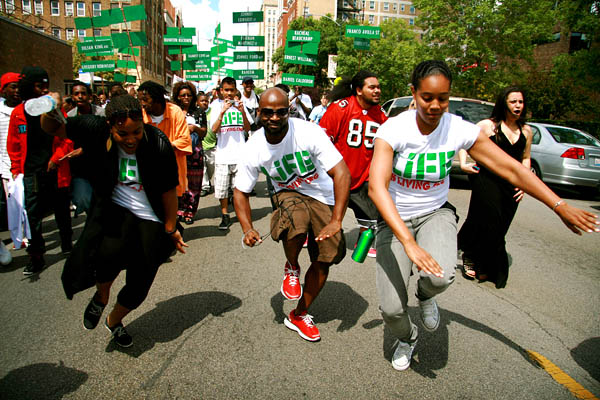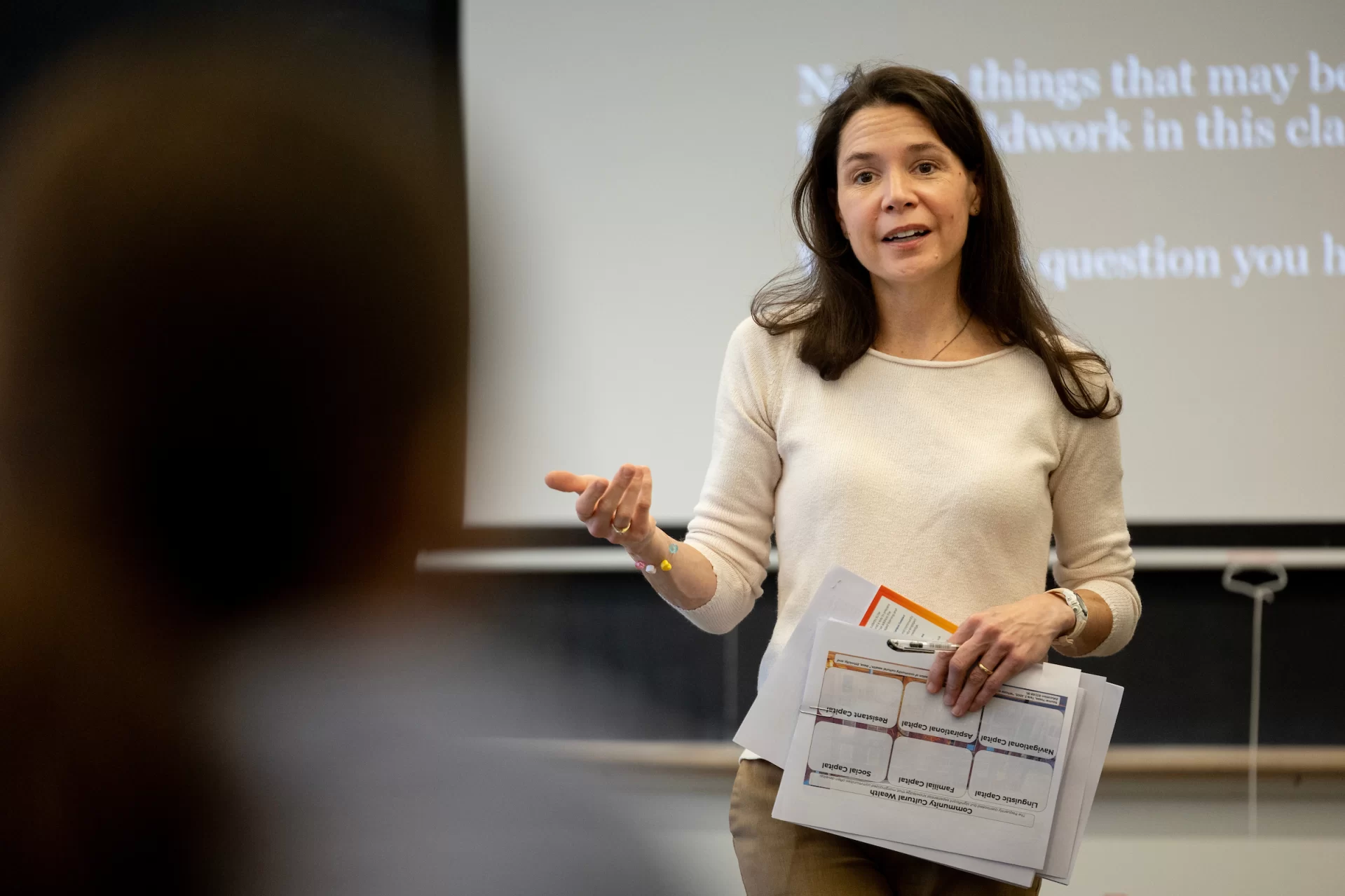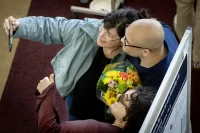‘red, black & GREEN: a blues’ breaks boundaries April 27-28

Marc Bamuthi Joseph, shown at center during the “Life is Living” festival, Chicago, 2009. Photo by Bethanie Hines.
“The movements for social change and environmental accountability are one and the same,” says Marc Bamuthi Joseph. “And focusing on steps to sustain the planet will ultimately force us to envision a pathway to sustaining humanity.”
Finding that focus is the goal of the stage show red, black & GREEN: a blues, which Joseph and a host of collaborators present in performances at 8 p.m. Friday and Saturday, April 27-28, at the Lewiston Memorial Armory, 65 Central Ave.
Bates College and the Bates Dance Festival present this widely acclaimed multimedia production that brings to life personal stories about the impacts of a deteriorating environment. Doors will open at 8 p.m., and the piece begins with a 20-minute immersive audience experience on stage.
Tickets cost $20 for the general public and $10 for students, and are available at batestickets.com. Learn more.
Called “as smart and provocative as it is breathtakingly beautiful” by the San Francisco Chronicle, rbGb combines spoken word, music, dance and a stunningly dynamic stage design. Such eclecticism reflects Joseph himself — a true Renaissance man equally talented as a poet, a dancer, educator and activist.
April 24, 2012: Marc Bamuthi Joseph in a half-hour interview with Maine Public Broadcasting’s Suzanne Nance.
April 20, 2012: Joseph is one of 21 artists nationwide to receive the prestigious Doris Duke Charitable Foundation Award.
This full-length performance piece is designed to jumpstart a conversation about environmental justice, social ecology and collective responsibility in the climate-change era. Joseph, one of America’s vital voices in performance and arts education, brings the piece to Lewiston as part of an ongoing relationship with Bates.
“rbGb breaks new artistic ground and delivers a powerful message,” says Laura Faure, director of the Bates Dance Festival. “We’re honored to have had a sustained relationship with the brilliant Marc Bamuthi Joseph over the past nine years, and are thrilled to bring this remarkable work to Maine.”
rbGb reunites seven artists from the acclaimed 2008 work the break/s: a mixtape for stage: writer-performer Joseph; director Michael John Garcés; choreographer Stacey Printz; turntablist/percussionist Tommy Shepherd; documentary filmmaker Eli Jacobs-Fantauzzi; lighting designer James Clotfelter; and media designer David Szlasa.
Joseph will be joined onstage in the Lewiston performances by Shepherd, dancer-actor Traci Tolmaire and vocalist Yaw.
Stories for rbGb were developed from material gathered at a series of festivals, held in four cities across the U.S., that use participatory arts and action to advance social and environmental justice in diverse and underserved communities. Under Joseph’s artistic direction, these Life is Living events in Oakland, Calif., Harlem, Chicago and Houston have yielded residents’ testimony as dramatic source material — specifically, the voices of people often left out of discussions about “living green.”
Interviews, poems, films and murals from Life is Living have become words, dance and images that express the challenge of living green where violent crime and poor education are more of a threat than ecological crisis, and that reveal emerging definitions of environmentalism in these communities.
Set into designer Theaster Gates’ malleable stage installation of repurposed building materials and clay objects, and heightened by Jacobs-Fantauzzi’s vivid films and vibrant graffiti murals from Life is Living, rbGb is driven by the idea that valuing your own life, and the life of your community, is the first step to valuing planet Earth.
The production is composed of two sections. Titled “the colored museum” (inspired in part by the George C. Wolfe play of the same name), the first invites spectators on stage to look into the windows of installations that represent four urban regions, and stories and movements from these areas.
In “colors and muses,” audience members return to their seats and watch as the piece extends beyond conversation and focuses on central figures in Houston, New York, Chicago and Oakland.



